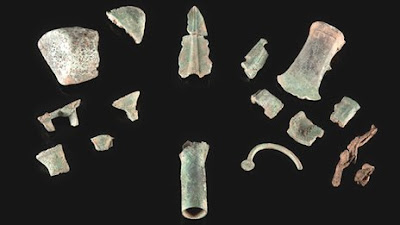A recent article in the online publication io9, “The First Artificial Sweetener Poisoned Lots of Romans“ provided a (very) brief look at some of the uses of lead (Pb) in the Roman world, including the tired old hypothesis that it was rampant lead poisoning that led to the downfall of Rome - along with gonorrhoea, Christianity, slavery, and the kitchen sink.
The fact the Romans loved their lead is not in question, with plenty of textual and archaeological sources that inform us of the uses of lead – as cosmetics, ballistics, sarcophagi, pipes, jewellery, curse tablets, utensils and cooking pots, and, of course sapa and defrutum (wine boiled down in lead pots) – but what almost all news articles regarding the use of lead in ancient Rome seem to ignore is data from osteological evidence.
Contemporary medical knowledge allows us to understand that metabolic disorders can be caused by a lack of nutrients: a lack of vitamin C causes scurvy; and a lack of vitamin D can lead to rickets; but they can also be caused by an abundance of something, like too much fluoride, too much mercury, too much arsenic, or too much lead.
Read the rest of the article...








